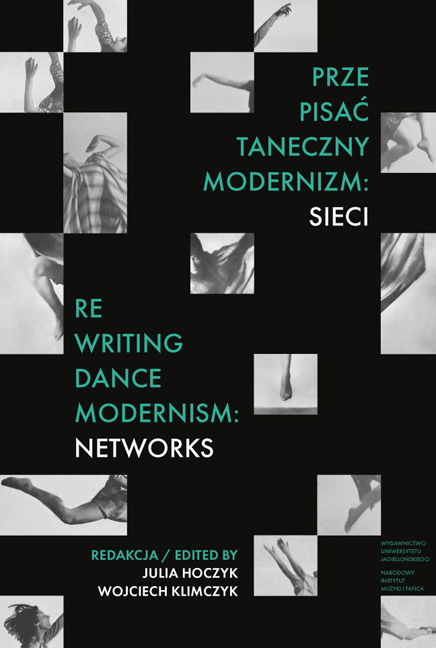Book contents
- Frontmatter
- Contents
- Prze-pisać taneczny modernizm: sieci
- Metodologie: usieciowianie tanecznego modernizmu
- Transmisje: transnarodowe trajektorie tanecznego modernizmu
- Poszerzenia: taneczny modernizm w słowiańskiej Europie Środkowej
- Methodologies: Networking Dance Modernism
- Transmissions: Transnational Trajectories of Dance Modernism
- Expansions: Dance Modernism in Slavic Central Europe
- Biogramy autorów
- Authors’ Biographies
- Indeks / Index
- Miscellaneous Endmatter
- Miscellaneous Endmatter
Places and Transnational Lines of Free Dance and Expressionist Dance in Europe
Published online by Cambridge University Press: 01 March 2024
- Frontmatter
- Contents
- Prze-pisać taneczny modernizm: sieci
- Metodologie: usieciowianie tanecznego modernizmu
- Transmisje: transnarodowe trajektorie tanecznego modernizmu
- Poszerzenia: taneczny modernizm w słowiańskiej Europie Środkowej
- Methodologies: Networking Dance Modernism
- Transmissions: Transnational Trajectories of Dance Modernism
- Expansions: Dance Modernism in Slavic Central Europe
- Biogramy autorów
- Authors’ Biographies
- Indeks / Index
- Miscellaneous Endmatter
- Miscellaneous Endmatter
Summary
This article deals with three outstanding figures of European expressionist dance which I have been closely occupied with over the past two years. Thanks to cooperation in several projects an artistic-educational focus was carried out. The artists’ whose contributions to modern dance I want to discuss in what follows are:
– Rosalia Chladek (born in 1905 in Brno – died in 1995 in Vienna),
– Sigurd Leeder (born in 1902 in Hamburg – died in 1981 in Herisau),
– Karin Waehner (born in 1926 in Gliwice – died in 1999 in Paris).
These three dance artists (see inset, fig. 1–3) represent different strands and directions of European modern dance (Dalcroze-line, Laban-line and Wigman-line). Besides their artistic-choreographic work, these representatives of expressionist dance each left a significant dance-educational heritage. All of them developed independent approaches and teaching methods, yet a common ground can be found in the fact that they developed their teaching conceptions in a cooperative way. Owing to external circumstances, they were forced to leave their native countries or successful work places. With their emigration or based on their international engagement, they spread their teachings and their techniques and styles of modern expressionist dance in Europe, and Sigurd Leeder and Karin Waehner overseas. Moreover, all of them also developed and influenced today's directions in dance studies.
Furthermore, I will address the cosmopolitan places and international centers where the phase of cultivating and passing on their pedagogical conceptions occurred:
– The New School of Laxenburg-Hellerau in Hellerau (near Dresden) and Laxenburg (near Vienna) for Chladek,
– The Jooss-Leeder School of Dance in Dartington Hall and the Sigurd Leeder School of Dance in London and Herisau (Switzerland),
– Paris, as well as several hot spots of the French dance avant-garde (in Waehner's case).
Rosalia Chladek and her method
We can begin with the dance and movement education of Rosalia Chladek (1905–1995), an exceptional dancer, choreographer and teacher born in the Habsburg Monarchy, whose whole artistic and educational thinking was marked, above all, by the influence of Dalcroze's project. Already during her professional dance education at the Schule für Rhythmus, Musik und Körperbildung in Hellerau and afterwards in Laxenburg, she started to develop her dance technique and teaching methods.
- Type
- Chapter
- Information
- Re-writing Dance Modernism: Networks , pp. 407 - 426Publisher: Jagiellonian University PressPrint publication year: 2023



